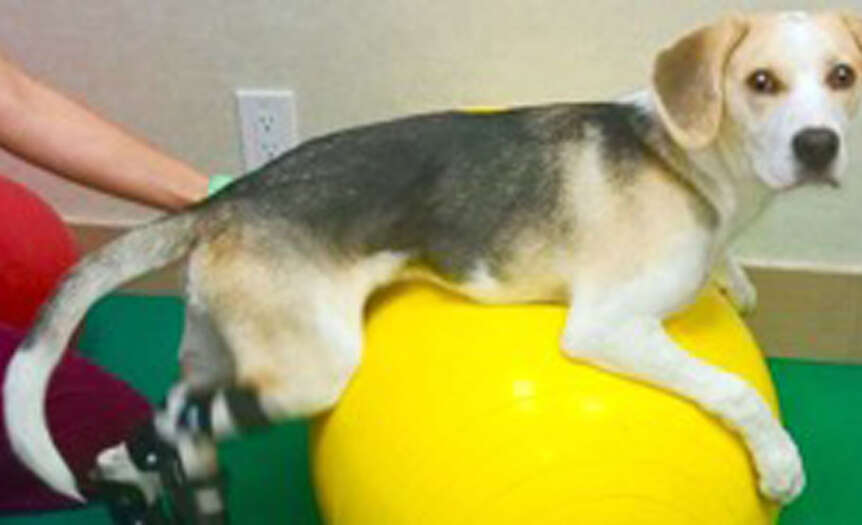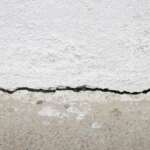The field of veterinary physical therapy has been expanding development has been spurred by the demonstration of its efficacy in humans and animals, an increase in technical advancements among veterinary surgeons and neurologists, higher owner expectations and an increase in pets’ life spans. This rapid growth has led to many misconceptions regarding this field.
“Doc, something is wrong with my Rottweiler. He had knee surgery last week. I was told that he needed to swim after surgery, so I put him in the pool yesterday. He bruised my arms thrashing about in the water, and now he’s having trouble walking.”
or
“My dog had spinal surgery a year ago, and even though I have been doing some PT that I learned on the internet, he is still dragging his legs.”
These too-common scenarios demonstrate the lack of knowledge regarding professional veterinary rehabilitation. It is seen by some as the last resort, but this is contrary to the core principles of physical rehabilitation which has as its main goal to prevent disuse changes to control pain in order to facilitate proper healing and restore mobility.
Veterinary rehabilitation is not just running on a treadmill, swimming, leash walks or passive range-of-motion exercise. It is much, much more than that. It refers to the use of non-invasive techniques (excluding chiropractic techniques) with the goal of controlling pain and returning the patient to full function. Its goals focus on improving balance, flexibility and strength. This field is classified by the AVMA under the specialty College of Sports Medicine and Rehabilitation. The term physical therapy is used exclusively in the HUMAN physical therapy field. For this reason, when referring to veterinary medicine, we must use the term physiotherapy or rehabilitation instead. A doctor in veterinary medicine must be certified in canine rehabilitation in order to provide rehabilitation services to animals.
The rehabilitation treatment protocol is customized for each patient. It requires a physical therapy diagnosis, specific goals, a detailed plan to reach those goals and follow-up. The rehabilitating doctor develops an exercise program and understands how to get the patient to do it (this is a challenging phase that requires creativity, imagination, experience and a great deal of patience). Modalities used in the veterinary rehabilitation field include hydrotherapy, treadmills, low-level laser, therapeutic ultrasound, electrical stimulation, manual therapies (joint mobilizations, therapeutic stretches, massage, etc.), physiotherapy exercises (therapy bands, cavalettis, physioroll work, balance boards, etc.) and the use of orthosis and prosthesis. The role of veterinary rehab in the use of orthotics and prosthesis requires acceptance and acclimatization of the device by the patient, learning of task skills for the performance of daily activities, and the improvement of balance, coordination, and proprioception while wearing the new device.
The notion of letting the pet use the affected body part when he or she “feels ready” and the reluctance to allow early controlled mobility in conditions where rehabilitation is indicated are concepts of the past. Increased awareness on recent veterinary medical advances is needed in order to prevent misinformation. The performance of physical therapy without guidance and with no knowledge of the discipline can cause serious, permanent damage to the pet. Seek a veterinarian with certification and vast experience on animal rehabilitation. Remember, veterinary specialties such as sport medicine and rehabilitation are developed to further improve your pet’s quality of life.










 Deering Estate
Deering Estate
 Massage Envy South Miami
Massage Envy South Miami
 Calla Blow Dry
Calla Blow Dry
 My Derma Clinic
My Derma Clinic
 Sushi Maki
Sushi Maki
 Sports Grill
Sports Grill
 The Healthy Kitchen
The Healthy Kitchen
 Golden Rule Seafood
Golden Rule Seafood
 Malanga Cuban Café
Malanga Cuban Café

 Kathleen Ballard
Kathleen Ballard
 Panter, Panter & Sampedro
Panter, Panter & Sampedro
 Vintage Liquors
Vintage Liquors
 The Dog from Ipanema
The Dog from Ipanema
 Rubinstein Family Chiropractic
Rubinstein Family Chiropractic
 Your Pet’s Best
Your Pet’s Best
 Indigo Republic
Indigo Republic




 ATR Luxury Homes
ATR Luxury Homes


 2112 Design Studio
2112 Design Studio
 Hamilton Fox & Company
Hamilton Fox & Company
 Creative Design Services
Creative Design Services
 Best Pest Professionals
Best Pest Professionals
 HD Tree Services
HD Tree Services
 Trinity Air Conditioning Company
Trinity Air Conditioning Company
 Cisca Construction & Development
Cisca Construction & Development
 Mosquito Joe
Mosquito Joe
 Cutler Bay Solar Solutions
Cutler Bay Solar Solutions


 Miami Royal Ballet & Dance
Miami Royal Ballet & Dance
 Christopher Columbus
Christopher Columbus
 Pineview Preschools
Pineview Preschools
 Westminster
Westminster
 Carrollton
Carrollton
 Lil’ Jungle
Lil’ Jungle
 Frost Science Museum
Frost Science Museum
 Palmer Trinity School
Palmer Trinity School
 South Florida Music
South Florida Music
 Pinecrest Orthodontics
Pinecrest Orthodontics
 Dr. Bob Pediatric Dentist
Dr. Bob Pediatric Dentist
 d.pediatrics
d.pediatrics
 South Miami Women’s Health
South Miami Women’s Health

 The Spot Barbershop
The Spot Barbershop
 My Derma Clinic
My Derma Clinic




 Miami Dance Project
Miami Dance Project

 Rubinstein Family Chiropractic
Rubinstein Family Chiropractic
 Indigo Republic
Indigo Republic

 Safes Universe
Safes Universe
 Vintage Liquors
Vintage Liquors
 Evenings Delight
Evenings Delight





 Atchana’s Homegrown Thai
Atchana’s Homegrown Thai
 Baptist Health South Florida
Baptist Health South Florida

 Laser Eye Center of Miami
Laser Eye Center of Miami
 Visiting Angels
Visiting Angels
 OpusCare of South Florida
OpusCare of South Florida

 Your Pet’s Best
Your Pet’s Best





 HD Tree Services
HD Tree Services
 Hamilton Fox & Company
Hamilton Fox & Company


 Creative Design Services
Creative Design Services